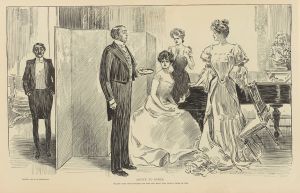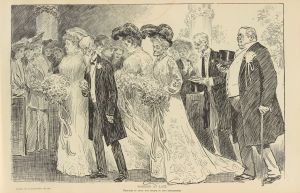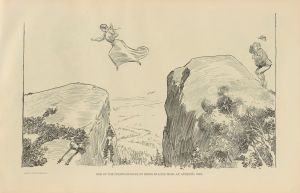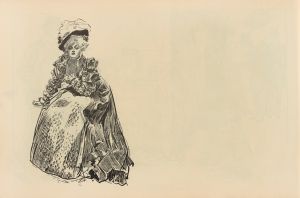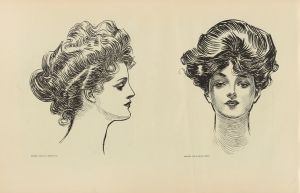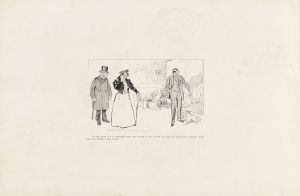
Sweetest story ever told
A hand-painted replica of Charles Dana Gibson’s masterpiece Sweetest story ever told, meticulously crafted by professional artists to capture the true essence of the original. Each piece is created with museum-quality canvas and rare mineral pigments, carefully painted by experienced artists with delicate brushstrokes and rich, layered colors to perfectly recreate the texture of the original artwork. Unlike machine-printed reproductions, this hand-painted version brings the painting to life, infused with the artist’s emotions and skill in every stroke. Whether for personal collection or home decoration, it instantly elevates the artistic atmosphere of any space.
Charles Dana Gibson was an influential American illustrator, best known for creating the iconic "Gibson Girl," a representation of the idealized American woman at the turn of the 20th century. Among his many works, "Sweetest Story Ever Told" is one of his notable illustrations, capturing the essence of his artistic style and the cultural sentiments of his time.
"Sweetest Story Ever Told" is a black-and-white illustration that showcases Gibson's mastery in pen-and-ink drawing. The artwork typically features a romantic or sentimental scene, often involving a young couple, which was a common theme in Gibson's work. His illustrations were known for their detailed and expressive line work, capturing both the fashion and the social dynamics of the era.
Gibson's work was widely published in popular magazines of the time, such as Life, Scribner's, and Harper's, making his illustrations highly recognizable and influential in American culture. The "Gibson Girl" became a cultural icon, representing a new standard of femininity and beauty, characterized by independence, confidence, and elegance. This ideal was reflected in many of his works, including "Sweetest Story Ever Told."
The illustration likely depicts a scene that resonates with the themes of romance and idealized relationships, which were prevalent in Gibson's era. His ability to convey emotion and narrative through simple yet effective imagery made his work stand out. The characters in his illustrations often appear poised and graceful, embodying the societal ideals of the time.
Gibson's influence extended beyond illustration, impacting fashion and social norms. The "Gibson Girl" style influenced women's fashion, with its characteristic upswept hair, high-necked blouses, and long skirts becoming popular among women who aspired to the elegance and poise depicted in his drawings. This cultural impact underscores the significance of works like "Sweetest Story Ever Told," as they contributed to shaping public perceptions of gender roles and aesthetics.
While specific details about the narrative or characters in "Sweetest Story Ever Told" may not be extensively documented, the illustration remains a testament to Gibson's artistic legacy. His work continues to be studied and appreciated for its artistic merit and cultural significance, offering insights into the societal values and aesthetics of early 20th-century America.
Overall, Charles Dana Gibson's "Sweetest Story Ever Told" exemplifies his contribution to American illustration and his role in defining an era's visual and cultural landscape. Through his skillful artistry and keen observation of social trends, Gibson left an indelible mark on the world of art and popular culture.






